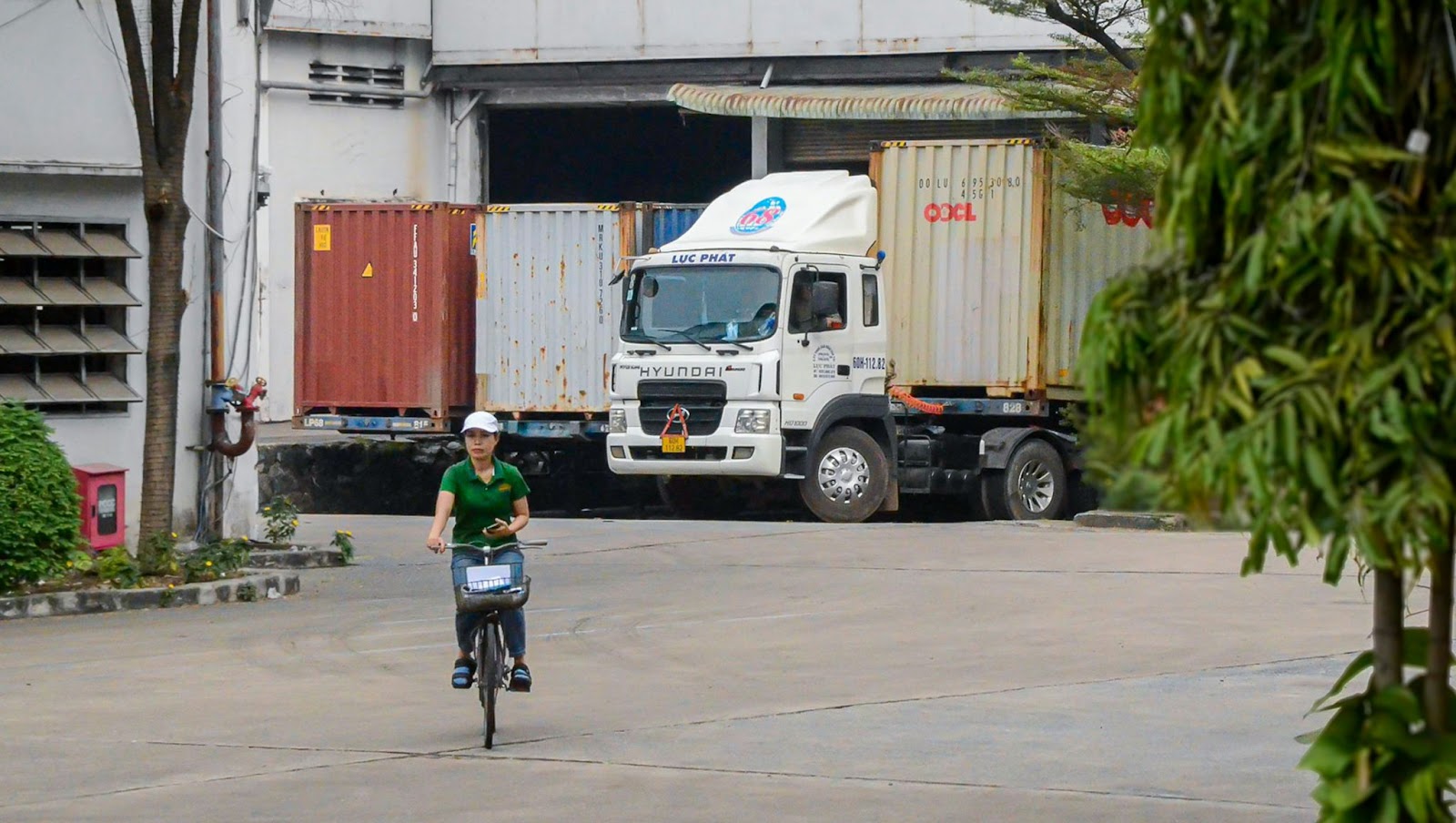Cost-Effective Shipping: Why Dry Van Trucking is a Smart Choice
Introduction to Dry Van Trucking and Its Role in Shipping
In the landscape of modern logistics, dry van trucking stands out as a versatile and cost-effective solution for shippers looking to optimize their operations. Unlike other modes that may require specialized handling or equipment, dry vans offer a straight forward and adaptable approach that help dry van trucking companies like HMD Trucking https://www.hmdtrucking.com/transportation-services/dry-van-trucking-company/ accommodating a vast array of goods — from electronics to textiles — without the need for temperature control. This flexibility is a key reason why over 65% of the nation’s freight is moved via dry van, as reported by the American Trucking Associations.
Besides versatility, dry van trucking has been praised for being cost-effective. With standardized 53-foot trailers, it makes sure the cargo space is used to its fullest potential, which again means fewer trips and overall lower fuel costs. A real-life example is large retailers like Walmart, which use dry vans as a way to simplify their distribution network and therefore keep the overheads as low as possible.
Additionally, dry van trucking offers great security and protection against environmental elements due to its enclosed structure, thus being ideal for securing valuable or sensitive goods. This reliability lies at the core of its critical role within industries and is a factor in driving business success through a competitive market.
Cost Comparison: Dry Van versus Other Trucking Methods
- Flatbed Trucking: Flatbeds are perfect for oversized or irregular cargo, but they are usually more expensive because they require additional equipment and handling. According to a 2022 industry survey, flatbed rates averaged about $2.90 per mile, while dry van rates averaged around $2.50 per mile.
- Refrigerated Trucking: Being in high demand by perishable products, the so-called “reefer” trucking would cost the temperature control devices. Hence, this involves increased operation costs. The general cost for reefer trucking could be about 15-20% more expensive compared to the dry van, hence less favorable over dry van if it deals with a non-perishable item.
- Less-than-Truckload Shipping: Although LTL is cheaper for smaller shipments, it is always more expensive per unit weight for larger shipments. Dry vans provide better economies of scale, where the cost per mile for a full truckload is lower.
Versatility and Capacity: Why Dry Van Meets Diverse Shipping Needs
Dry van trucking is versatile because it can handle so many commodities sans special handling, which makes it very valuable to companies with varied product lines. The standard 53-foot trailer provides ample space, comfortably fitting up to 45,000 pounds of cargo-whether it’s boxed electronics, palletized consumer goods, or packaged food products. For instance, a study by FreightWaves found that retailers using dry vans had a 30% reduction in logistical complexity, enabling them to manage their inventories more efficiently. Besides, the scalability of dry van fleets lets companies ramp up or scale back quickly to meet market demands without sacrificing timely delivery for cost efficiency.
Fuel Efficiency and Environmental Benefits of Dry Van Trucks
Dry van trucking has a strong case for fuel efficiency and environmental benefits, underpinning its appeal as a cost-effective shipping choice. First, there is the aerodynamic nature of dry van trailers that reduces air resistance on the road. This design feature not only enhances fuel economy but also results in lower carbon emissions, thus responding to the increasing demand for greener transport solutions.
A study by the North American Council for Freight Efficiency (NACFE) found that dry vans with aerodynamic enhancements like side skirts and tails can realize as much as 10% in fuel savings. These modifications mean real dollar savings for an industry in which fuel accounts for almost 25% of operating costs. In addition, low rolling resistance tires further enhance efficiency, with fuel consumption reduced by about 3%.
Besides, a lot of logistics companies are shifting toward trucks with advanced engine technologies and hybrid powertrains, increasingly available in the dry van sector. These contribute to a smaller carbon footprint and adhere to very strict environmental regulations. For businesses, this means not only contributing to their sustainability goals but can also unlock doors to eco-conscious customers and partners, helping improve brand reputation and competitive advantage in an evolving market.
Safety and Security: Protect Your Cargo with Dry Van Trailers
Dry van trailers are very efficient in protecting cargo, which is done through their strong, enclosed design to save goods from environmental conditions such as rain, dust, and UV rays. There have been fewer theft incidents concerning dry vans according to the report from FreightWatch International, because these contain strong lock systems, and their smart looks do not raise suspicion for theft. For instance, one retailer transporting electronics reported that switching to dry van transportation reduced transit damages by up to 25%. The elimination of temperature control reduces any mechanical breakdown likelihood, ensuring reliability consistently. For businesses, it means fewer claims on insurance, and added peace of mind as well, ultimately protecting the assets and the reputation while not breaking the bank.
Dry Van Technological Advancement: Cost Efficiency
Over the years, dry van trucking has enjoyed several technological innovations that greatly improve its economy. Advanced telematics systems are now capable of real-time tracking and predictive analytics, enabling route planning optimization and a reduction in the incidences of truck idling. According to a Transportation Research Board report this 2023, such an integration reduces operational costs as high as 15%. It’s a tool no logistics manager can do without.
Besides, the presence of smart sensors inside dry vans continuously monitors the conditions of the cargo. This not only helps to keep goods intact by sending alerts to shippers on issues like weight shifts or unauthorized access but also reduces the risk of costly claims and returns. According to a case study by Smart Freight Technologies, companies using sensor-equipped vans experienced a 30% decrease in cargo losses.
AI-powered load optimization software also enables the tactical loading of products in the trailer to optimize the capacity usage and proper weight distribution. This results in fewer trips and reduced fuel consumption, again highlighting the efficiency of dry van trucking. These cumulatively confer a competitive advantage on shippers to realize cost reduction without compromising on standards of service.
Success Stories: How Businesses Save with Dry Van Trucking
Certain businesses have already leveraged the cost-effective propensity of dry van trucking, with quite spectacular returns. Consider this mid-sized distributor of electronics from Texas: it was able to reduce its annual logistics cost by 22% within one year by transferring 70% of shipments to dry van trucking. This move freed up funds, enabling this company to enhance its product range by a strategic recast of finances to post a 15% increase in revenue.
Another success story is that of a national furniture retailer. The company, upon switching to dry van solutions, reduced its transit delays by 35% and was able to minimize damage claims by 18%. These businesses, by capitalizing on the huge capacity and reliable protection afforded by dry van, have been able to optimize their shipping operations and improve customer satisfaction and competitiveness in the marketplace.
Considerations for Choosing Dry Van Services for Your Business
Some of the key considerations for choosing dry van services involve the cargo type and volume, among others, to align with your business needs. With a capacity of up to 45,000 pounds, dry vans are ideal for non-perishable goods, boxed items, and palletized freight. A Logistics Management survey revealed that businesses which accurately matched their cargo profile to dry van capabilities increased their shipping efficiency by as much as 20%.
Geographical reach: For the wide reach, considering the immense coverage, dry van trucking is suited for domestic routes due to the extensive network of carriers. This allows flexibility in scheduling and faster turnarounds. According to a report by Supply Chain Dive in 2022, dry vans could cover a 500-mile radius in less than 24 hours to reduce lead time.
Assess your seasonal needs. Dry van fleets provide scalability to help meet the demands of a business that sees seasonal surges. For example, one Midwest beverage company more than doubled its dry van fleet during peak summer months and saw 30% savings compared to less-than-truckload options.
Finally, partner with a carrier offering real-time tracking and data analytics. According to the American Transportation Research Institute, comprehensive telematics can reduce idle time by 15%. This helps your shipment stay on course and in budget.
Conclusion: The Economical Benefits of Using Dry Van Trucking
Finally, dry van trucking materializes as one of the most cost-effective ways of shipping due to its versatile nature, capacity, and economic gains. The dry vans support efficient logistics management and significant cost savings by accommodating a wide range of commodities without specialized handling. Standard 53-foot trailers optimize cargo space, minimizing the number of trips needed and reducing fuel costs. Companies from electronic distributors to furniture retailers have benefited greatly from the services of dry vans in terms of huge logistics cost cuts and enhanced efficiency. Add to this the rapid changes in technology like real-time tracking and AI-driven load optimization that continue to raise the economic value proposition of dry van trucking, and its strategic asset relevance in modern supply chains is sealed.




Post Comment